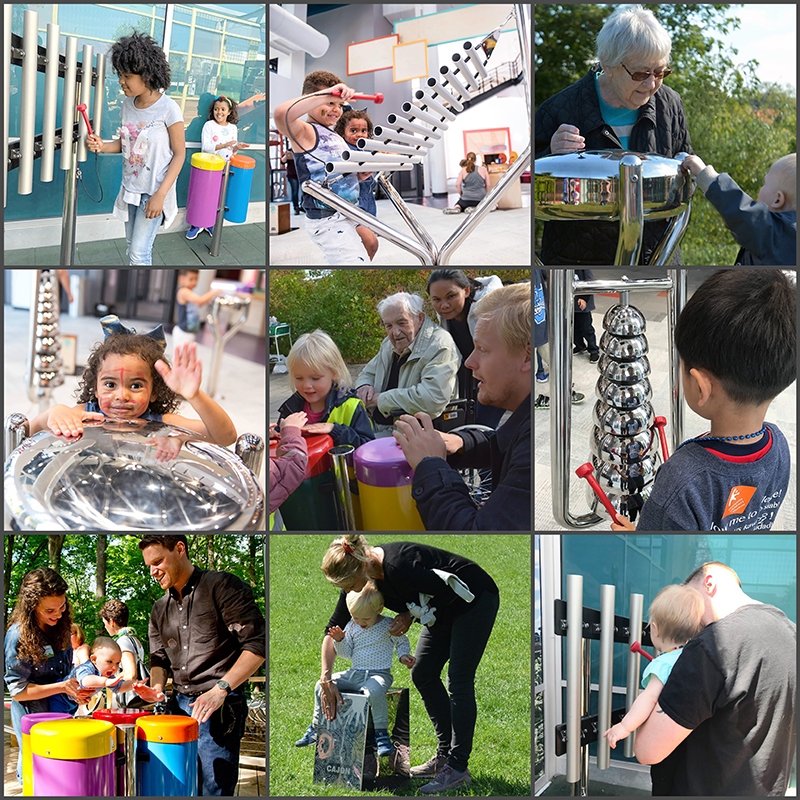Museums, Music and Memories - Including Musical Exhibits in Museums Encourages Family Connections
Children’s museums represent one of the fastest-growing segments of the museum community and have been rapidly increasing in number since their beginnings, with new initiatives and exhibitions seeing visitor numbers swell.
With a clear message of fun and learning for all – Children’s museums are unique places that bring children, families, and communities together and provide memorable, immersive learning experiences, provoke the imagination, introduce unknown worlds and subject matters, and offer unique environments for quality time with family.
These museums incorporate an array of activities that contribute to the mental, physical, affective, and social development of children. Museum educators strive to develop programs and activities that address literacy, performing arts, science and math, visual arts, cultures, and health and wellness.
Children represent the leaders of the future – our upcoming innovators, scientists, politicians, CEOs, musicians, artists, teachers, and community members. They shape what the world will become, and engaging this audience is essential. However, while a child may be the reason behind a trip to a children’s museum, it’s an adult that makes the decision to make the visit, assess the experience and decide if they would return. Children’s museums must evolve from engaging only children to engaging the entire family to bring fresh perspectives to exhibits and programs to continue to thrive.
The interactions among family members, spurred by a visit to the museum, can result in a greater sense of family connectedness. Today, family groups come in all different shapes and sizes, from children visiting with their parents or grandparents and even great-grandparents to caregivers with children aging from babies to teens. Whereas some embrace visiting museums with a multi-generational group, it can sometimes be difficult keeping the youngest in your group engaged at the same time as the older ones.
Due to its universal appeal, music can successfully bridge intergenerational gaps. Making music brings people together like nothing else and offering quality musical opportunities - on real instruments – for spontaneous music-making, provides a gateway to the performing arts as well as an engaging family learning experience.
Music ignites all areas of child development: intellectual, social and emotional, motor, language, and overall literacy. It helps the body and the mind work together and helps children develop important skills essential for success in life, such as concentration, confidence, and self-esteem. Young children learn through play and experimentation and by watching and listening to the grownups they love. Setting an example as an enthusiastic participator in music activities is the best thing any parent or caregiver can do to help set a child on the road to a lifelong love of music. Unfortunately, some parents avoid making music with their children in everyday life because they feel inadequate as music-makers themselves. This is a true loss for both generations.
Percussion Play instruments address these feelings of inadequacy by being so simple and easy to play that anyone, regardless of age, ability, or experience, can create interesting and fresh melodies – perfect for beginners and reluctant players. The use of the pentatonic scale in many instruments makes them excellent for improvisation; you can just play around and never hit anything inordinately dissonant in a kind of safe musical haven. The technique is not a problem, given the simplicity of the instruments. Dissonance is not a problem, given the pentatonic scale.
Outdoor musical instruments, with their emphasis on family and multi-generational participation, make a welcome change; often discovery and play spaces have been perceived, either because of their design or because it was assumed, as places for kids only, and adults just stood and watched or wandered off to see the rest of the museum. Through musical play, you are teaching the power and value of music to your child. The result: a joyful, musical child, enhanced family relationships, and a strong, musical community.
Read how outdoor musical instruments were included in the Treetops Outpost at the Connor Prairie outdoor history museum, located in Indiana. The Santa Maria Valley Discovery Museum created a mini music station in their entranceway following a gift from a private donor who specifically wanted to see a musical instrument exhibit in the museum.
We appreciate that not all museums have outdoor facilities or outdoor spaces large enough to accommodate a musical garden or playground. Space was at a premium at the Building For Kids Museum in Wisconsin, but that didn’t stop the Education Coordinator creating a wonderful musical wall in their Arts Studio. For further inspiration check out our case study where the Minnesota Children’s Museum created the exhibit ‘Creativity Jam’ - a musical playground, featuring five Percussion Play instruments, that allows visitors to quite literally jam with family, friends and other visitors, all indoors.
Such shared music-making can facilitate and strengthen relationships between parents or caregivers and their children. What's more, with all our instruments being designed with inclusive play in mind – nobody is excluded from the fun whatever their ability, mobility, or age. Providing musical experiences for family audiences (indoors or out) is a valuable way to advance a thriving museum’s mission, expand its audience, and strengthen its place within the community.
